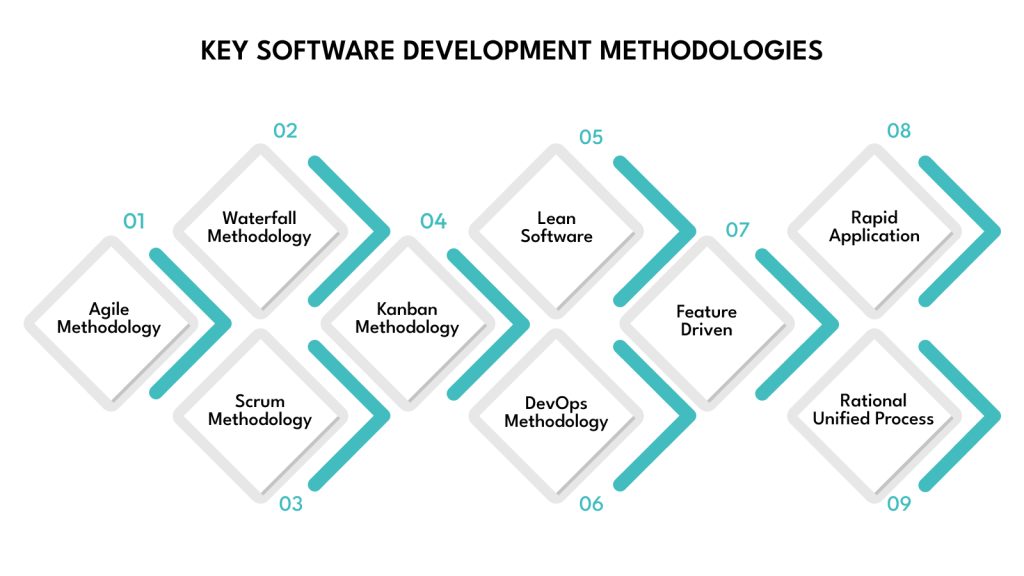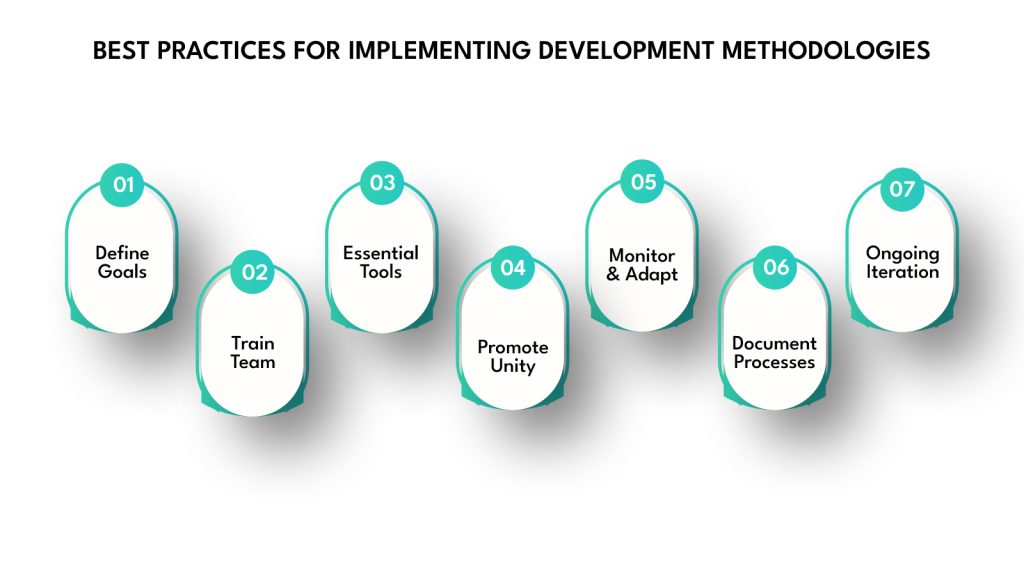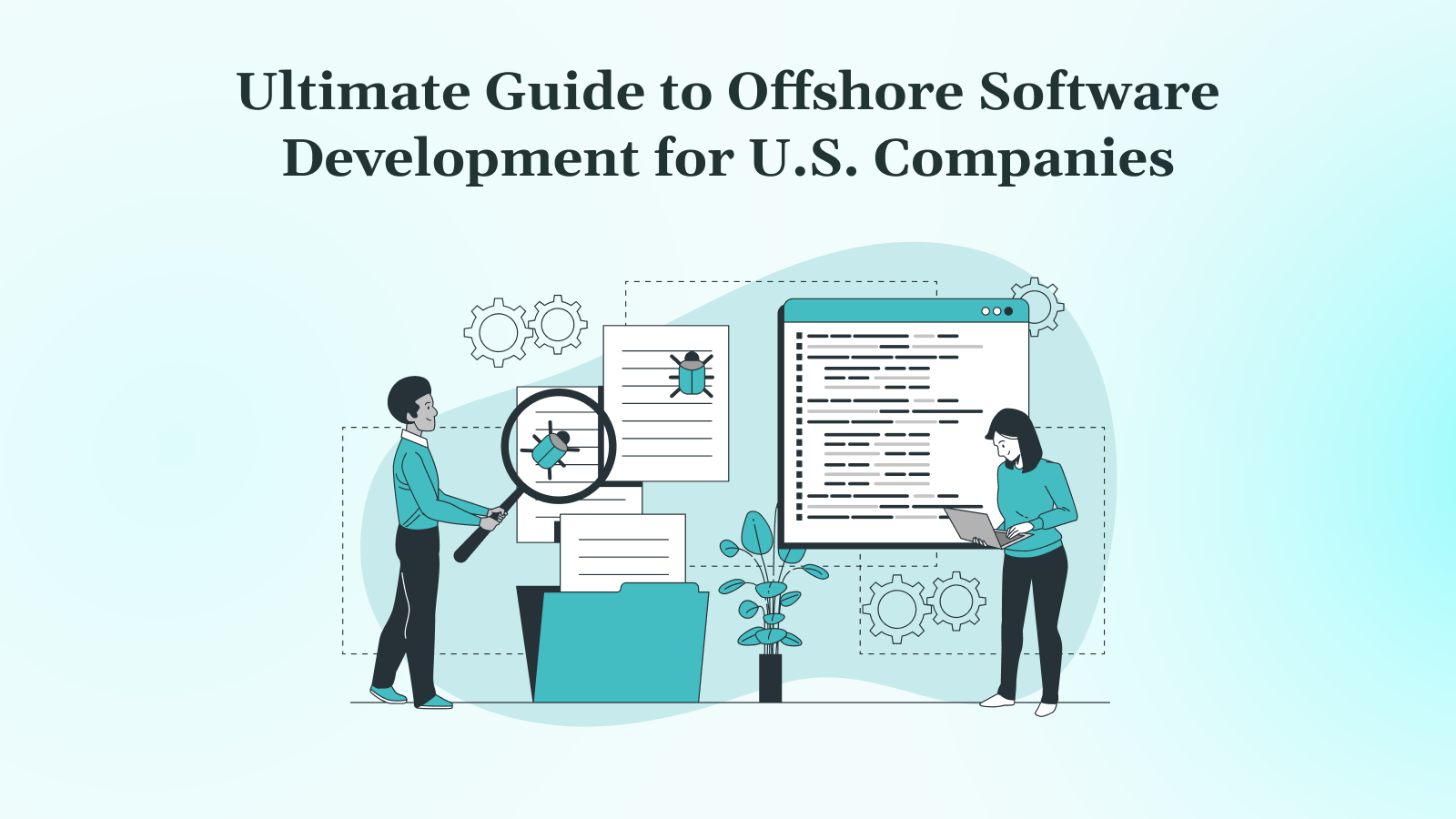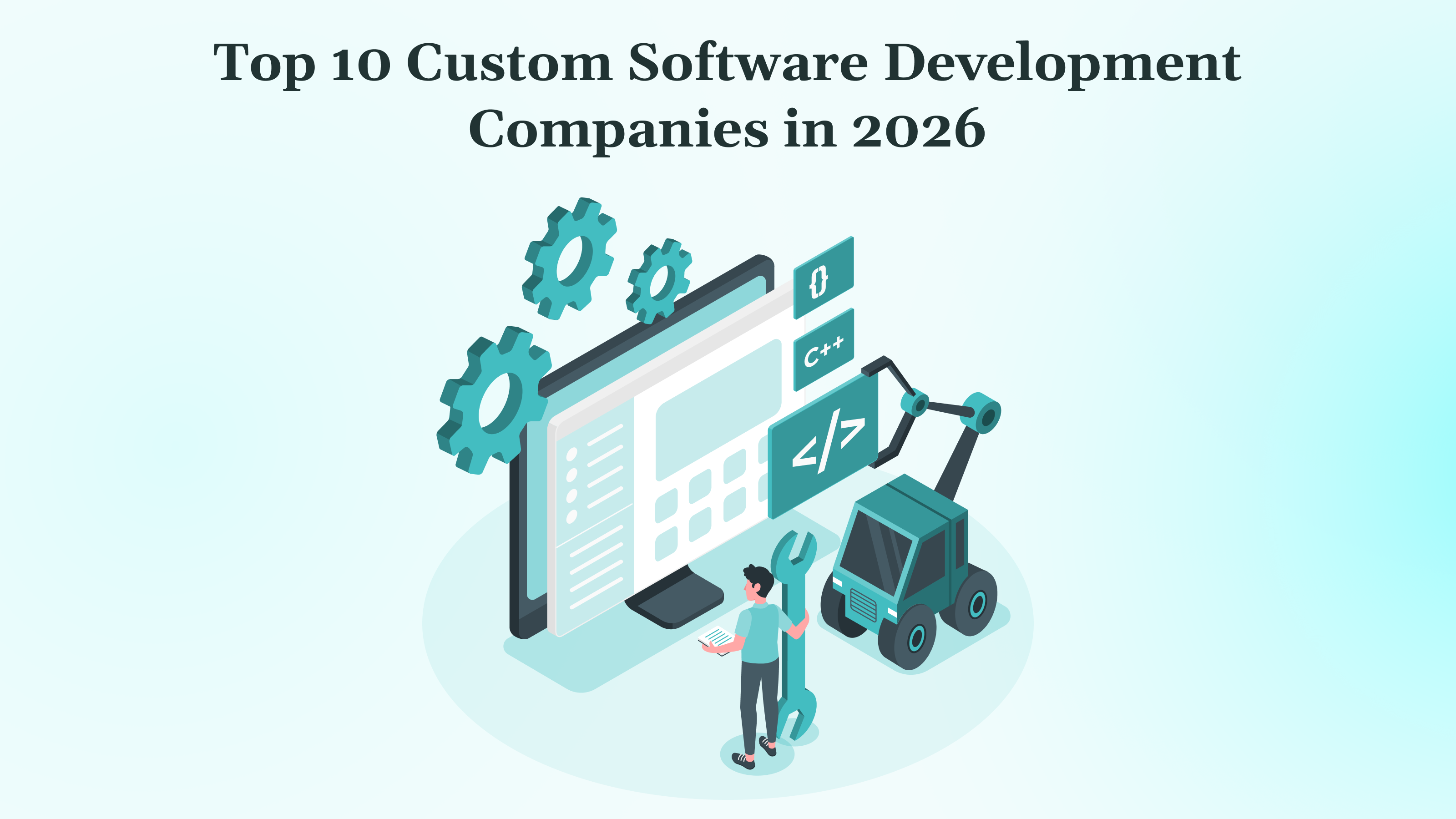Writing software is a collaborative activity that requires more than just technical skills. Having a clear, systematized way of working will help avoid the difference between having a seamless project and a chaotic project. Due to these factors, many teams employ development methodologies to ensure the team is aligned, provides clear guidance, and delivers high-quality projects with confidence.
This guide examines the most widely used software development methodologies, breaking down their principles, benefits, and ideal applications. You will learn how to choose the right approach for your project and discover best practices to implement them effectively. By the end, you will be equipped to make informed decisions that align with your goals and deliver value to your stakeholders.
Key Takeaways
- Software development methodologies provide structure to manage teams, timelines, and deliverables effectively.
- Agile, Scrum, Kanban, and DevOps are flexible and responsive, while Waterfall, RUP, and FDD are more structured and suited to predictable projects.
- Choosing the right methodology depends on factors like project complexity, team size, deadlines, and stakeholder involvement.
- Blending methodologies is common, especially in modern teams that combine flexibility with structure.
- Implementing best practices, such as setting clear goals, utilizing the right tools, and fostering collaboration, is key to success regardless of the approach.
What Are Software Development Methodologies?
Software development methodologies are systematic approaches to planning, executing, and managing the software development process. These frameworks define how tasks are organized, how teams collaborate, and how progress is tracked, ensuring your project stays on course. By providing clear guidelines, methodologies help you balance competing priorities, such as speed, quality, and cost, while addressing risks and meeting stakeholder expectations.
Each methodology has its philosophy, processes, and tools, tailored to different project types and team dynamics. Some emphasize flexibility to adapt to changing requirements, while others prioritize predictability and structure. Understanding these frameworks allows you to select the one that best fits your unique needs, whether you’re developing a mobile app, an enterprise system, or a SaaS platform.
With a clear definition in place, let’s dive into the key methodologies that shape modern software development.
Key Software Development Methodologies

Selecting the proper methodology starts with understanding the most popular options and their strengths. Below, we will explore nine methodologies to help you make an informed choice.
Agile Methodology
Agile Methodology is an iterative, flexible process that emphasizes collaboration and adaptability, as well as delivering small, working parts of your project. Rather than needing to complete the whole project before releasing, you will work in iterative cycles called sprints. Sprints are short development cycles often spanning from two weeks to one month. Agile allows for stakeholder feedback and changes to the requirements early in the project.
Agile encourages forward-looking collaboration among developers, stakeholders, and end-users to deliver a product that evolves in response to changing needs. It is also suitable for projects where requirements are not precise or are evolving, such as a startup building a sophisticated app. Implementation requires active involvement from stakeholders and can be particularly challenging for teams unfamiliar with working on projects that involve frequent iterations.
- Key Features: Iterative development, frequent feedback, cross-functional teams, and adaptability to change.
- Benefits: Faster delivery of usable features, improved collaboration, and flexibility to pivot as needs evolve.
- Best For: Dynamic projects like mobile apps or SaaS platforms with frequent updates.
Waterfall Methodology
Waterfall is a traditional process with linear methodology where each phase of development, requirements, design, implementation, testing, and deployment is done at each stage in a sequential process. In waterfall methodology, you need to define all of the requirements at the beginning to proceed to the next stage. Each stage must be detailed and completed to progress. A structured process controls each defined stage to ensure predictable processes and precise documentation.
The Waterfall model is suitable for projects with established requirements and minimal anticipated change, such as government agencies or regulated sectors like healthcare. However, its rigidity can make it challenging to accommodate late-stage changes, and delays in one phase can impact the entire timeline.
- Key Features: Sequential phases, comprehensive documentation, and fixed requirements.
- Benefits: Clear milestones, predictable timelines, and strong documentation for compliance.
- Best For: Projects with stable requirements, like enterprise systems or compliance-driven software.
Scrum Methodology
Scrum follows the Agile methodology, emphasizing the delivery of minor, incremental updates through fixed-length development cycles called sprints. You organize work into sprints, typically two weeks long, guided by roles such as Product Owner, Scrum Master, and Development Team. Daily stand-up meetings keep everyone aligned, while sprint reviews ensure feedback is incorporated.
Scrum tends to work best where speed of delivery and frequent stakeholder input are required, such as in a tech startup. Scrum provides structured roles and ceremonies that increase accountability within teams, but may become inefficient if discipline and an experienced facilitator are not maintained.
- Key Features: Sprints, daily stand-ups, defined roles, and sprint retrospectives.
- Benefits: Rapid delivery, enhanced team collaboration, and continuous improvement through feedback.
- Best for: Fast-paced projects, such as web applications or iterative product development.
Kanban Methodology
Kanban focuses on visualizing and optimizing workflows using a Kanban board to track tasks. You categorize tasks into columns like “To Do,” “In Progress,” and “Done,” limiting work-in-progress to prevent bottlenecks. This approach emphasizes continuous delivery without fixed iterations, allowing you to release features as they are ready.
Kanban is ideal for teams managing ongoing maintenance or projects with variable workloads, such as support systems. It requires strict task prioritization and may not be suitable for projects with rigid timelines or intricate interdependencies.
- Key Features: Visual Kanban boards, work-in-progress limits, and continuous delivery.
- Benefits: Improved workflow visibility, reduced bottlenecks, and flexibility in task management.
- Best For: Maintenance projects or teams with steady, ongoing tasks.
Lean Software Development
Lean emphasizes efficiency by eliminating waste and focusing on delivering value to users. You prioritize features that directly address user needs, streamline processes, and optimize resources to enhance overall efficiency. Lean encourages rapid prototyping and frequent testing to validate ideas early, reducing unnecessary work.
This methodology is suitable for startups or teams building minimum viable products (MVPs) with limited resources. However, it requires a deep understanding of user needs and can be challenging for complex projects with multiple stakeholders.
- Key Features: Waste elimination, rapid prototyping, and focus on user value.
- Benefits: Cost efficiency, faster delivery, and alignment with user priorities.
- Best For: MVPs or resource-constrained projects like early-stage startups.
DevOps Methodology
DevOps unifies development and operations by promoting automation, team collaboration, and ongoing delivery. It combines coding, testing, and deployment into a continuous workflow. Tools such as Jenkins and Docker help automate builds and releases, allowing for faster, more stable updates with lower risk.
DevOps is ideal for projects that require high reliability and frequent releases, such as cloud-based applications. It demands investment in automation tools and a cultural shift toward shared responsibility, which can be challenging for traditional teams.
- Key Features: Continuous integration/delivery, automation, and cross-team collaboration.
- Benefits: Faster releases, improved reliability, and reduced deployment errors.
- Best for: Cloud applications or systems that require frequent updates.
Feature-Driven Development (FDD)
Feature-Driven Development (FDD) organizes work around developing specific features in short iterations. You create a feature list, plan their development, and assign them to small teams for implementation. Regular progress reports and inspections ensure quality and alignment with goals.
FDD works well for large projects with clear feature sets, such as enterprise software. It requires strong planning and can be less flexible for projects with rapidly changing requirements.
- Key Features: Feature-focused iterations, regular inspections, and detailed planning.
- Benefits: Clear feature prioritization, scalability for large teams, and consistent progress tracking.
- Best For: Large-scale projects with defined features, like enterprise systems.
Rapid Application Development (RAD)
Rapid Application Development (RAD) prioritizes speed, using prototyping and iterative development to deliver quickly. You build prototypes, gather user feedback, and refine them in short cycles, often using low-code platforms or visual tools to accelerate growth.
Rapid Application Development is well-suited for fast-paced projects or those shaped by user feedback, such as client-facing applications. It relies on continuous user input and often trades scalability for quicker delivery.
- Key Features: Prototyping, user feedback, and rapid iterations.
- Benefits: Fast delivery, strong user alignment, and reduced development time.
- Best For: Time-sensitive projects or user-centric applications.
Rational Unified Process (RUP)
The Rational Unified Process (RUP) is a structured framework that divides development into four phases: inception, elaboration, construction, and transition. You define requirements, design the system, build it, and deploy it systematically, with risk management and iteration built into each phase.
RUP suits complex, high-risk projects, such as aerospace or defense software. It requires significant documentation and process discipline, which can slow progress for smaller teams.
- Key Features: Phased development, risk management, and iterative refinement.
- Benefits: Structured risk mitigation, clear milestones, and robust documentation.
- Best for: High-risk, complex projects that require strict oversight.
Having explored these methodologies, let us discuss how to select the right one for your project.
Choosing the Right Methodology for Your Project
Choosing the correct software development methodology starts with understanding the unique needs of your project. Factors like project complexity, team size, stakeholder involvement, technical expertise, and time or budget constraints all influence which approach will work best. To simplify the decision-making process, the table below highlights how different methodologies align with these key factors:
| Factor | Recommended Methodologies | Why It Fits |
|---|---|---|
| Project Complexity | Agile, Scrum (for dynamic), Waterfall, RUP (for fixed) | Agile and Scrum handle changing needs well, while Waterfall and RUP suit stable scopes. |
| Team Size | FDD, RUP (for large), Kanban, Lean (for small) | Larger teams benefit from structured planning; smaller teams need flexibility. |
| Stakeholder Involvement | Agile, Scrum, RAD (high), Waterfall, RUP (low) | Agile methods thrive with continuous input; traditional ones prefer clear upfront requirements. |
| Technical Expertise | DevOps (automation skills), Kanban (task discipline) | DevOps needs familiarity with CI/CD tools, while Kanban requires workflow management. |
| Timelines & Budgets | RAD, Lean (tight/time-sensitive) | These approaches focus on speed and resource efficiency, ideal for MVPs or quick launches. |
Best Practices for Implementing Software Development Methodologies

Implementing a methodology successfully requires careful planning and execution. These best practices ensure you maximize its benefits while avoiding common pitfalls:
- Define Clear Goals: Align your team on project objectives, such as delivery timelines or feature priorities, to guide decision-making and maintain focus.
- Train Your Team: Provide training on the chosen methodology’s processes, tools, and roles to ensure everyone understands their responsibilities and workflows.
- Use Appropriate Tools: Adopt tools like Jira for Agile/Scrum, Trello for Kanban, or Jenkins for DevOps to streamline tasks and track progress.
- Foster Collaboration: Encourage open communication through regular meetings, shared dashboards, or collaborative platforms to keep teams aligned.
- Monitor and Adapt: Track metrics like velocity (Agile/Scrum) or cycle time (Kanban) to assess performance, and adjust processes based on feedback and results.
- Document Processes: Maintain clear documentation for requirements, workflows, and decisions to ensure consistency and support onboarding or audits.
- Iterate Continuously: Regularly review outcomes, gather stakeholder input, and refine your approach to improve efficiency and quality over time.
By following these practices, you can effectively implement your chosen methodology, ensuring your project stays on track and delivers value.
Conclusion
Software development success starts with selecting the proper methodology, but it does not end there. Applying that methodology effectively requires skill, structure, and a partner who understands how to adapt it to real-world business challenges. That is where DEVtrust comes in.
At DEVtrust, we help you architect the entire development journey, aligning methodology, tools, and team structure to meet your goals. We provide expert guidance from planning through deployment. Our team blends technical excellence with clear communication, responsibility, and disciplined execution to deliver results that are consistent, scalable, and future-ready.
We have worked with startups that need lean MVPs, rapid iterations, and tight timelines, as well as with established enterprises that require stability, compliance, and long-term support. Our innovation-driven culture ensures your product is built with foresight and strategy.
To bring your software project to life with expertise and precision, partner with DEVtrust. Our skilled developers specialize in applying the correct methodology to deliver custom solutions tailored to your vision. Contact us today to discuss your project and start building software that drives success.
Top Software Development Methodologies Explained
Unlock insights into top software development methodologies; explore Agile, Scrum, Kanban benefits. Find your ideal project approach. Click now!
Contact Us


